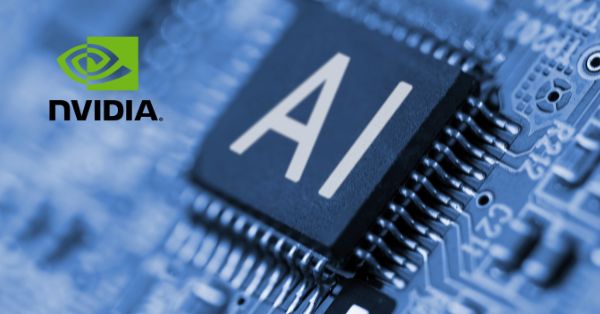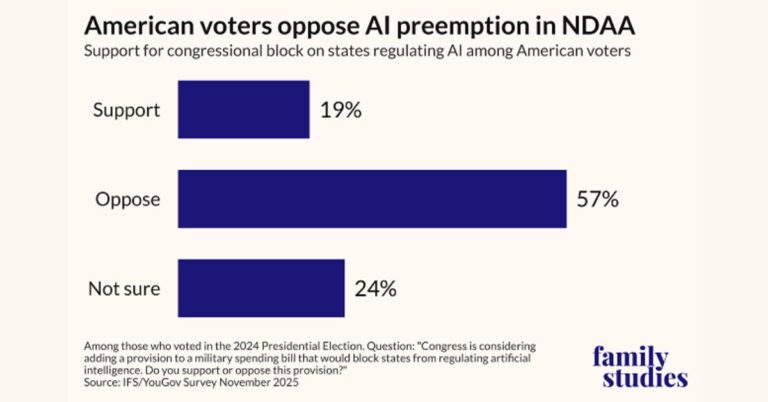Growing Doubts Around AI’s Value in Telecom
The telecom industry has long been considered a natural fit for AI, given its vast data sets, complex networks, and pressing need for efficiency. For years, analysts and technology vendors positioned AI as a transformative force capable of optimizing network performance, slashing operating costs, and unlocking new revenue streams through smarter services.
However, the narrative is beginning to shift.
Recent research from MIT and feedback from telecom professionals suggest that AI may not be delivering on its lofty promises. In fact, a 2025 MIT report revealed a sobering insight: 95% of enterprises investing in generative AI tools reported zero meaningful return on investment. This figure underscores a broader pattern within telecom, where high expectations are often met with technical roadblocks, cultural resistance, and underwhelming outcomes.
This growing skepticism isn’t limited to academic circles. Industry forums, Reddit, and LinkedIn discussions are increasingly filled with candid feedback from telco professionals who are frustrated with AI’s limited real-world impact. They cite long integration timelines, low user adoption, and difficulty extracting actionable insights from AI models—especially in environments with siloed data and legacy infrastructure.
AI Tools vs. Telecom’s Operational Complexity
Telecom networks are arguably among the most data-rich but operationally complex environments in the digital economy. Every call, text, data session, and handover between cell towers generates a stream of telemetry data. Theoretically, this makes telecom an ideal candidate for AI applications such as predictive analytics, network assurance, anomaly detection, and dynamic resource allocation.
However, complexity is also the Achilles’ heel.
Many telcos operate with a patchwork of legacy systems, vendor-specific hardware, and custom-built software stacks. This fragmented environment makes it difficult to implement AI models that rely on unified, high-quality, and real-time data.
For example, while AI can optimize radio access networks (RAN) by predicting traffic spikes and auto-adjusting configurations, these capabilities often remain trapped in proof-of-concept (PoC) stages. Operators struggle with issues like:
-
Incomplete data pipelines.
-
Incompatibility with older network elements.
-
Lack of real-time data access from multi-vendor environments.
Even advanced solutions like intent-based networking—which promises automatic adaptation to service intent—rely heavily on domain-specific training and deep contextual understanding that today’s LLM-based AI systems often lack.
Telecom Industry Still Betting on AI Integration
Despite disappointing results in some areas, global telecom operators remain committed to exploring AI’s potential. The reasons are clear: mounting pressure on average revenue per user (ARPU), rising 5G deployment costs, increased customer demands, and a saturated consumer market.
To stay competitive, operators are turning to AI in three main areas:
-
Network Operations: AI models are being used for intelligent load balancing, spectral efficiency improvements, and traffic prediction. This enables operators to reduce latency and packet loss while improving the overall quality of service (QoS).
-
Customer Service Automation: AI-enabled chatbots and virtual assistants are being deployed across call centers, mobile apps, and websites. These tools provide round-the-clock support for billing inquiries, service requests, and device troubleshooting.
-
Revenue Assurance and Fraud Prevention: AI is applied to detect SIM card cloning, identity theft, and usage anomalies that point to potential fraud. Some telcos are also using AI to automate revenue leakage detection across billing systems.
One of the most widely publicized case studies is SK Telecom’s bold vision to generate over £14 billion in AI-related revenue by 2028. While this showcases ambition, it also highlights the need for supportive regulatory frameworks, skilled personnel, and effective monetization strategies—all of which are still maturing.
Customer-Facing AI: Mixed Results at Best
When it comes to customer experience (CX), AI has delivered modest but tangible gains—particularly in automating routine interactions and reducing call center loads. Today, almost every Tier 1 telco uses AI chatbots for tasks like:
-
Account upgrades/downgrades.
-
Plan comparisons.
-
Self-service troubleshooting.
-
Billing inquiries and dispute resolutions.
These chatbots typically leverage natural language processing (NLP) to understand user input and provide contextual responses. However, their capabilities are far from perfect. In many cases, customers report frustration with:
-
Misunderstood queries.
-
Repetitive replies.
-
Inability to escalate to human agents promptly.
This often results in a “false efficiency”, where interactions are fast but unhelpful. As a result, many operators are reintroducing hybrid models that pair AI assistants with live agents—essentially using AI for triage rather than resolution.
AI-driven personalization, on the other hand, is showing more promise. By analyzing user behavior, device preferences, location data, and previous interactions, telcos are crafting tailored offers and upsell campaigns. This level of micro-targeting can improve customer retention and ARPU, provided it’s executed with care to avoid privacy backlash.
AI’s Infrastructure Impact: Rising Data Demands, Not Revenue
Behind the scenes, AI’s biggest contribution to telecom may not be improved services but rather escalating infrastructure demand. Training and deploying large-scale AI models—particularly LLMs like GPT-4 or Gemini—requires massive compute power, memory, and bandwidth. These systems drive increased east-west traffic across data centers and between cloud regions.
As a result, vendors like Ciena, Cisco, and Arista are seeing growth in demand for optical transport and switching solutions. Similarly, AI workloads are pushing the limits of existing edge computing architectures, prompting new investments in Edge/MEC solutions.
But here’s the problem: these costs are not offset by new revenues. AI hasn’t created significant new monetizable products or services for telcos. Instead, it’s contributing to capital expenditures, increasing the total cost of ownership (TCO) of network infrastructure without a clear ROI path.
Misconceptions Around AI-Driven Job Losses
Contrary to popular belief, AI hasn’t triggered widespread layoffs in telecom. Analysis of employment data across global telcos reveals that most job reductions since 2018 are linked to:
-
Fiber rollout completions.
-
Outsourcing and shared services.
-
Divestitures of business units.
-
Adoption of non-AI-based automation tools.
For instance, BT is planning up to 55,000 job cuts by 2030—but these are linked to its shift from copper to fiber and the automation of provisioning tasks, not generative AI.
Meanwhile, tech giants like Microsoft and Amazon have expanded their workforces significantly over the same period, even as they double down on AI research.
The Reality Behind Market Projections
Market forecasts from analysts like Coherent Market Insights, Veritis, and MarketsandMarkets suggest a robust CAGR for the AI in telecom market, reaching billions of dollars in valuation by 2028 and beyond. These reports highlight growth areas such as:
-
AI-enhanced self-care portals.
-
Virtualized network function (VNF) management.
-
Dynamic pricing optimization.
-
Automated customer segmentation.
However, many of these projections are based on potential—not current achievements. Interviews with operators in NVIDIA’s “State of AI in Telecommunications” report reveal key pain points that remain unresolved:
-
Poor explainability of AI decisions.
-
Low trust from operations teams.
-
Lack of transparency in vendor tools.
-
Underdeveloped metrics to evaluate AI performance.
In short, the market may be expanding, but the impact remains shallow.
Challenges to AI Success in Telecom
The gap between AI’s potential and its performance is driven by several persistent obstacles:
-
Legacy Ecosystems: Most networks are not cloud-native. Integrating AI into these ecosystems is cumbersome and expensive.
-
Data Privacy Regulations: Laws such as GDPR and CCPA impose strict limitations on how telecom operators can use personal data for training models.
-
Lack of Open Standards: Without standardized APIs and model interfaces, AI solutions often struggle with cross-vendor compatibility.
-
Skill Gaps: Telecom still lags behind industries like finance and healthcare when it comes to AI talent and training programs.
Overcoming these issues will require not just better tools but a culture shift toward digital-first thinking and AI literacy across business units.
Where AI Does Make a Measurable Impact
Despite limitations, AI is already making a measurable difference in several targeted areas:
-
Predictive Maintenance: AI models monitor network elements and predict when a component might fail based on environmental factors and historical data. This allows for proactive interventions, reducing unplanned downtime.
-
Cybersecurity: AI helps detect DDoS attacks, identify phishing campaigns, and stop suspicious logins in real-time.
-
Fraud Detection: AI identifies patterns in SIM swaps, identity theft, and fake registrations, allowing faster mitigation.
-
Network Slicing: AI can dynamically allocate resources to different slices in a 5G network based on traffic load and quality-of-service (QoS) requirements.
These examples show that when used with a clear scope, quality data, and strong governance, AI can drive efficiency and reduce risk.
Balancing Hype with Reality
The telecom industry is now entering a mature phase in its AI journey. Initial hype is giving way to a more grounded understanding of what AI can and cannot do. Instead of aiming for total transformation, many telcos are rethinking AI’s role as an incremental tool that supports—but doesn’t replace—core network functions or human expertise.
Hybrid models are increasingly favored. In these setups, AI handles repetitive, time-sensitive tasks while humans focus on decision-making, escalation, and exception handling. This allows AI to augment operations rather than automate them entirely.
To succeed, operators must:
-
Set clear KPIs for AI projects.
-
Evaluate vendor tools based on measurable outcomes.
-
Prioritize explainability and user trust.
-
Embed AI capabilities within larger telco cloud and automation strategies.
Conclusion: From Tech Charlatan to Practical Tool?
AI is not a silver bullet, but it’s not a sham either. In the telecom sector, it is evolving from an overhyped concept to a suite of targeted tools that—when properly implemented—can solve real problems.
The key takeaway for telecom executives: focus on pragmatic, low-risk applications first. Build internal expertise. Resist the urge to chase buzzwords. And above all, match AI investments to clearly defined business objectives.
As telecom infrastructure becomes increasingly software-defined and reliant on 5G, edge computing, and private networks, AI will remain part of the equation—but only as one cog in a larger digital transformation machine.







































